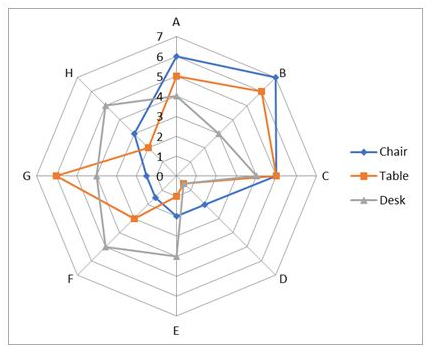Dear Aspirants, Our IBPS Guide team is providing new series of Quantitative Aptitude Questions for SBI Clerk Mains 2020 so the aspirants can practice it on a daily basis. These questions are framed by our skilled experts after understanding your needs thoroughly. Aspirants can practice these new series questions daily to familiarize with the exact exam pattern and make your preparation effective.
Caselet
Directions (01 – 05): Study the following information carefully and answer the questions given below.
100 men, 150 women, 200 children are in a club. 70 men like milk and 50 men like biscuit. 40 children like only milk. 60 children like only biscuit. 50 women like both milk and biscuit. 70 women like only milk.
1) There are 2 persons selected for a committee. What is the probability that both are men or women?
A) 215 / 1347
B) 3225/4041
C) 645/4490
D) 3225/4490
E) None of these
2) What is the probability of selecting 2 men who like milk?
A) 161/360
B) 161/330
C) 280/427
D) 274/427
E) None of these
3) Find the probability of 2 women who like only biscuits to be selected?
A) 29/149
B) 30/149
C) 29/745
D) 29/150
E) None of these
4) Find the number of ways 2 men who like milk or 2 children who like both milk and biscuit are to be selected?
A) 14730
B) 14350
C) 14560
D) 14830
E) None of these
5) Find probability from a group of women and children, 2 persons who like only milk to be selected?
A) 1099/14400
B) 1199/14215
C) 1099/12200
D) 1199/12215
E) None of these
Data Interpretation
Directions (06 – 10): Study the following information carefully and answer the questions given below.
The graph shows the goods sold by different shops (in thousands)

6) No. of chairs sold by shop E and shop C together is how much % more / less than the no. of tables sold by shop C and shop G together?
A) 53.33%
B) 66.66%
C) 36.36%
D) 68.66%
E) None of these
7) Shop F produced 18000 number of goods out of which (1/10)th are chairs. The number of chairs not sold is how much % of total number of goods sold?
A) 4.33%
B) 6%
C) 3.5%
D) 1.66%
E) None of these
8) If shop C sells only 33.33% of the chairs produced, what is the difference between the total number of chairs produced by shop C and the total number of chairs sold by all the shops together?
A) 13000
B) 16000
C) 17000
D) 14000
E) 15000
9) If ‘3x’ number of goods produced by shop H and ‘x’ is the number of desks sold by shop C and shop H sold all the produced chairs and tables. What is the number of non sold desks?
A) 4000
B) 2000
C) 7000
D) 3000
E) None of these
10) The number of goods produced by shop D is average of chairs sold by all the shops. If the ratio of chairs, tables, and desks produced by shop D is 3:1:1, what is the ratio of unsold tables and chairs together to the desks sold by D?
A) 3:5
B) 1:5
C) 5:6
D) 1:6
E) None of these
Answers :
Directions (01 – 05):
Men: 100
Biscuit: 50
Milk: 70
Women: 150
Milk alone: 70
Biscuit alone: 30
Both milk and biscuits: 50
Children: 200
Milk alone: 40
Biscuit alone: 60
Both milk and biscuit: 100
1) Answer: A
Now,
Required probability = (100C2 / 450C2) + (150C2/ 450C2)
= (100 * 99) / (450 * 449) + (150 * 149) / (450 * 449)
= 215 / 1347
2) Answer: B
Required probability = 70C2/100C2
= (70 * 69)/(100 * 99) = 161/330
3) Answer: C
Required probability = 30C2/150C2
= (30 * 29)/(150 * 149)
= 29/745
4) Answer: A
Number of ways = 70C2 + 100C2
= (70 * 69) + (100 * 99)
= 14730
5) Answer: D
Required probability = 110C2/350C2
= (110 * 109)/(350 * 349)
= 1199/12215
Directions (6-10) :
6) Answer: C
Required percentage = (11 – 7) / 11 * 100 = 36.36%
7) Answer: D
No. of chairs = 18000 * 1/10 = 1800
No. of chairs not sold = 1800 – 1500 = 300
Required percentage = (300 / 18000) * 100
= 1.66 %
8) Answer: A
No. of chairs produced by shop C = 5000/33.33 * 100
= 15000
No of chairs sold by all the shops together
= (6000 + 7000 + 5000 + 2000 + 2000 + 1500 + 1500 + 3000) = 28000
Required difference = 28000 – 15000 = 13000
9) Answer: B
Number of desks sold by shop C = x = 4000
Total no. of goods produced by shop H = 3 * 4000 = 12000
Number of non – sold desks = 12000 – (3000 + 2000 + 5000)
= 2000
10) Answer: A
No of chairs sold by all the shops together
= (6000 + 7000 + 5000 + 2000 + 2000 + 1500 + 1500 + 3000) = 28000
No. of goods produced by D = 28000 / 8 = 3500
Ratio of tables and chairs unsold to the desks sold by D,
Required ratio = [(700 – 500) + (2100 – 2000)]:500
= 3:5
| Check Here to View SBI Clerk Mains 2020 Quantitative Aptitude Questions | ||
| Day 45 | Day 44 | Day 43 |
| Click Here for SBI Clerk 2020 – Detailed Exam Notification | ||





